calsfoundation@cals.org
Hendrix College
Hendrix College is an independent, liberal arts college located in Conway (Faulkner County) and affiliated with the United Methodist Church. In its 2007 “America’s Best Colleges” guide, U.S. News & World Report included Hendrix in the top tier of the nation’s liberal arts colleges; it was the only college or university in Arkansas to be listed.
The Reverend Isham Lafayette Burrow established a school in 1876, then known as Central Institute, in Altus (Franklin County) with an initial enrollment of twenty students. In the 1881–82 school year, the name was changed to Central Collegiate Institute. In 1884, Burrow appealed to the Methodist Church for financial help. The following year, the conferences raised funds to purchase the school and elected Burrow to serve as president.
By June 1887, when Burrow was replaced as president by Dr. Alexander Copeland (A. C.) Millar, the school had been doing full college work for some time. The first four-year degrees were awarded in 1885. On June 10, 1889, the name of the school was changed to Hendrix College, honoring Bishop Eugene Russell Hendrix of Kansas City, Missouri, who had recently been named presiding bishop of the Arkansas Conference. On March 22, 1890, the board of trustees voted to move the college to Conway. The college was formally opened there on September 18, 1890.
Millar was replaced in 1902 by the Reverend Stonewall Anderson. Lacking significant support from the Methodist Church and finding few resources in the Depression-ridden Southern states, Anderson sought and received financial assistance from the General Education Board of New York, a philanthropic organization founded in 1903 and funded by John D. Rockefeller. Receiving assistance from outside sources broadened the college’s orientation and was a continuing source of revenue for many years, though it tended to move the college away from strict church-dominated roots.
On January 10, 1910, Anderson resigned due to his frustration with the Church’s spreading its support among three colleges: Hendrix, Henderson College (later Henderson-Brown College) in Arkadelphia (Clark County), and Galloway Women’s College in Searcy (White County). A. C. Millar returned to the office. The college prospered under his administration, and a number of improvements were made, but Millar resigned over conflicts with the board. The board of trustees, meeting on June 17, 1913, offered the position to John Hugh Reynolds, who then accepted, after having refused the position in 1910.
Reynolds was the first non-clergyman to become president. He served from 1913 until retirement in 1945. His policy was to try to provide a good liberal arts education for a small number of carefully selected students. In 1914, Hendrix was placed on Columbia University’s list of “first class colleges” whose students were admitted unconditionally. In 1914, Reynolds initiated the Arkansas Pastors’ School at the college, and it became an annual event of the Southern Methodist Church. Hendrix was added to the North Central Association of Colleges and Secondary Schools in 1924 and, in 1929, was approved by the American Association of Colleges. In 1931, it became the second college in the state, after the University of Arkansas (UA) in Fayetteville (Washington County), to be approved by the American Association of University Women.
On March 12, 1929, for reasons of financial expediency, Henderson-Brown College in Arkadelphia was merged with Hendrix under the name Hendrix-Henderson College, though the Henderson portion of the name was dropped after about two years. In 1933, Galloway Women’s College also was merged into the school, leaving Hendrix the only Methodist institution of higher education in the state for white students.
Dr. Matt Locke Ellis, president of Henderson State Teachers College (as it was called after being purchased by the state), now Henderson State University, became president of Hendrix when Reynolds retired in 1945. As most colleges began to put more emphasis on business and practical affairs, Hendrix adjusted its course offerings but was able to maintain its orientation in liberal arts.
Dr. Marshall T. Steel, an honors graduate of Hendrix, was named to succeed Ellis in 1958. He succeeded in a $3,750,000 fundraising campaign, oversaw increased enrollment, initiated new construction, and raised faculty salaries. Several dramatic changes occurred during Steel’s tenure. Henry F. Buhler of Little Rock (Pulaski County) deeded to the school property worth $2,500,000, described as one of the greatest gifts ever given to a Methodist institution. Linda Pondexter of Hope (Hempstead County) became the first African-American student to graduate from Hendrix following the school’s integration in 1965. Steel also ended intercollegiate football in 1960, citing the cost as incompatible with the school’s academic needs.
Dr. Roy B. Shilling Jr., vice president of Southwestern University in Georgetown, Texas, succeeded Steel in February 1969. Shilling was the first professional administrator to head the college. His tenure was marked by a doubling (or more) of endowment funds, the stabilization of the student population at about 1,000, a tripling of the operating budget, dramatic raises for faculty and staff, an increase in the number of faculty, an increase in the percentage of faculty holding doctorates or terminal degrees, greater funding for four professional chairs, and the construction of three significant buildings. During Shilling’s tenure, Hendrix was chosen as the site of the Arkansas Governor’s School (AGS).
Dr. Joe Hatcher, who followed Shilling, came to Hendrix in May 1981. During his tenure, two new buildings were constructed, and the endowment fund rose to $60 million. When Hatcher left, Hendrix selected its first woman president, Dr. Ann Hayes Die, who assumed office on July 6, 1992. Dr. J. Timothy Cloyd was installed as the tenth president on October 22, 2001.
In May 2006, the administration publicly announced plans to create a college village on a tract of more than 100 acres of adjacent underdeveloped property owned by the college. The village is in a pedestrian-friendly area containing all the facilities of a small city, including a hotel that can double as student housing during the academic year and serve as accommodation for lectures and conventions.
Hendrix alumni have excelled in many fields. Three of the college’s presidents (Reynolds, Ellis, and Steel) and a significant number of its faculty members were alumni. Actress Mary Steenburgen studied at Hendrix (1971–1972) and was awarded an honorary doctorate in 1989. Sarah Caldwell, founder and director of the Boston Opera Group and the first woman to conduct the Metropolitan Opera in New York, attended Hendrix from 1940 to 1942. Representative Wilbur D. Mills, who graduated in 1930, served many terms as chairman of the influential Ways and Means Committee in the U.S. Congress. Dr. Harry Meyer, who graduated in 1949, developed a vaccine that eliminated German measles (rubella) and is given credit for having saved millions of children from birth defects. President Cloyd said in his 2005–2006 annual report, “We change the lives of those who will change the world.”
Although vastly changed in size, practices, financing, and educational opportunities from its origins, Hendrix has maintained the core principles of its liberal arts foundation and has sought consistently to enable its students to attain the ideals of its motto, which first appeared on the cover of the 1898 catalog: “Unto the whole person.”
Hendrix re-started its football program in fall 2013, dedicating the Young-Wise Memorial Stadium (which hosts football, men’s lacrosse, and track and field events) on November 9, 2013. By September 2014, Hendrix had 1,358 students enrolled.
President Cloyd announced his resignation in February 2013, and W. Ellis Arnold III took over as interim president. It was announced in November 2013 that Dr. William Tsutsui would become president in June 2014. He served for just over five years, announcing his retirement in late 2019. Trustees selected previous interim president W. Ellis Arnold III to become the new president of Hendrix. He retired in June 2022, and Dr. Karen Petersen was named in January 2023 as the next president. Enrollment in the fall of 2023 was at 1,107.
For additional information:
Charles, Myrtle E. “Early Days at Hendrix College, 1887–1910.” Faulkner Facts and Fiddlings 2 (October 1960): 5–24.
Hendrix College. http://www.hendrix.edu/ (accessed September 13, 2024).
Lester, James E., Jr. Hendrix College: A Centennial History. Conway, AR: Hendrix College Centennial Committee, 1964.
Meriwether, Robert W. Hendrix College: The Move from Altus to Conway. Little Rock: Rose Publishing Company, 1976.
———. “Hendrix College and Its Relationship to Conway and Faulkner County, 1890–1934.” Faulkner Facts and Fiddlings 26 (Summer 1984): 1–45.
Katherine Stanick
Little Rock, Arkansas
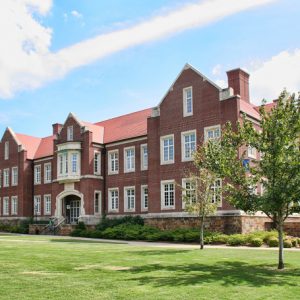 Acxiom Hall, Hendrix College
Acxiom Hall, Hendrix College 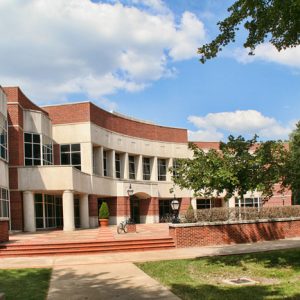 Bailey Library
Bailey Library 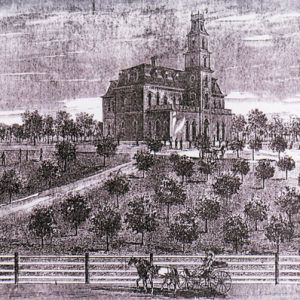 Central Collegiate Institute
Central Collegiate Institute 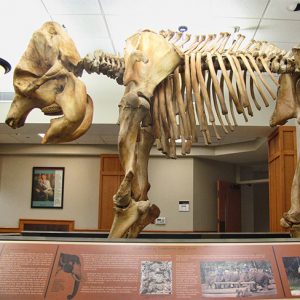 Elephant Skeleton
Elephant Skeleton 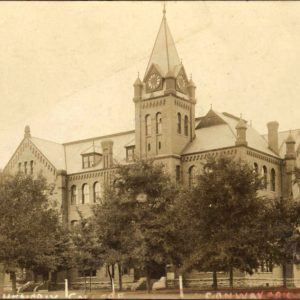 Hendrix College in Early Years
Hendrix College in Early Years 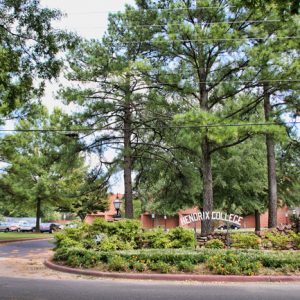 Hendrix College Entrance
Hendrix College Entrance  Hendrix College Concert Band
Hendrix College Concert Band 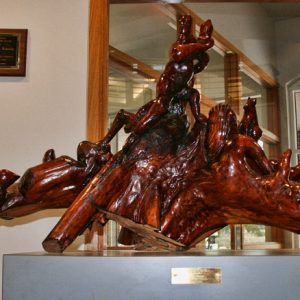 The Last Days by Cicero Pilgrim
The Last Days by Cicero Pilgrim 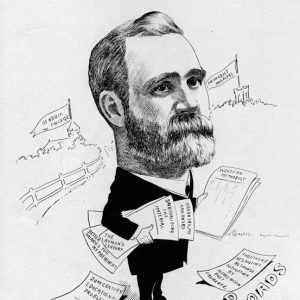 Alexander Millar
Alexander Millar 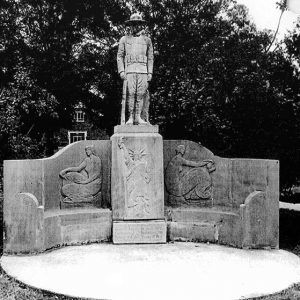 Young Memorial
Young Memorial 



Comments
No comments on this entry yet.